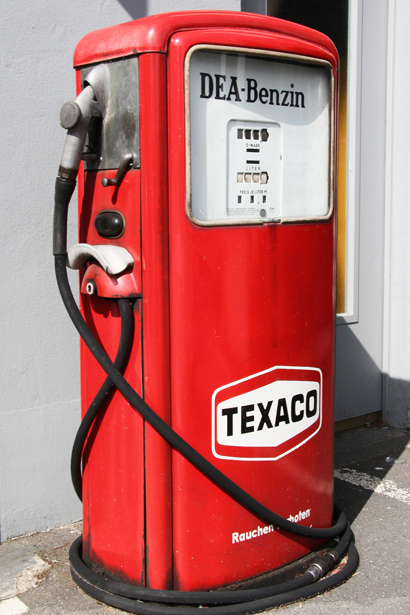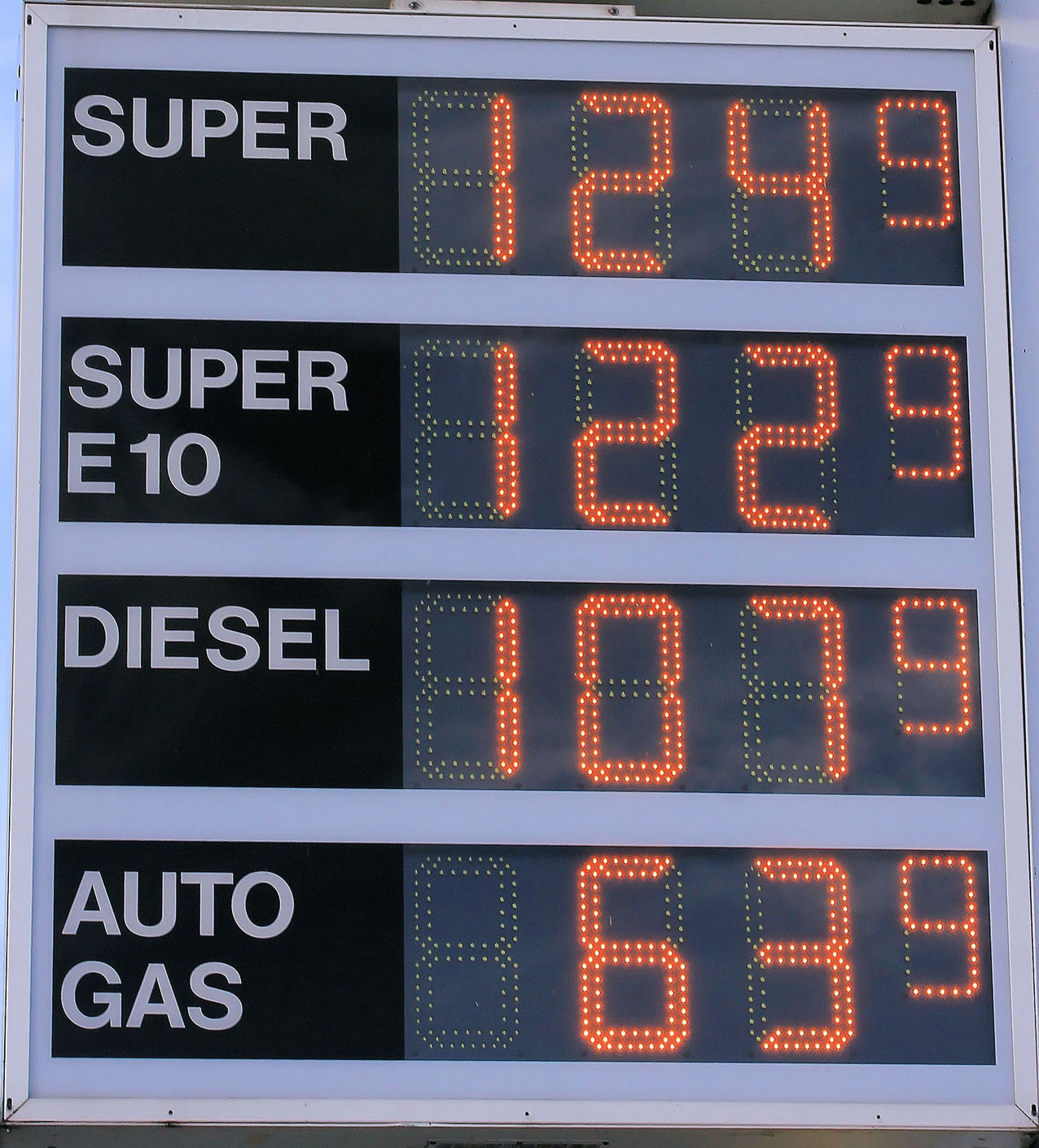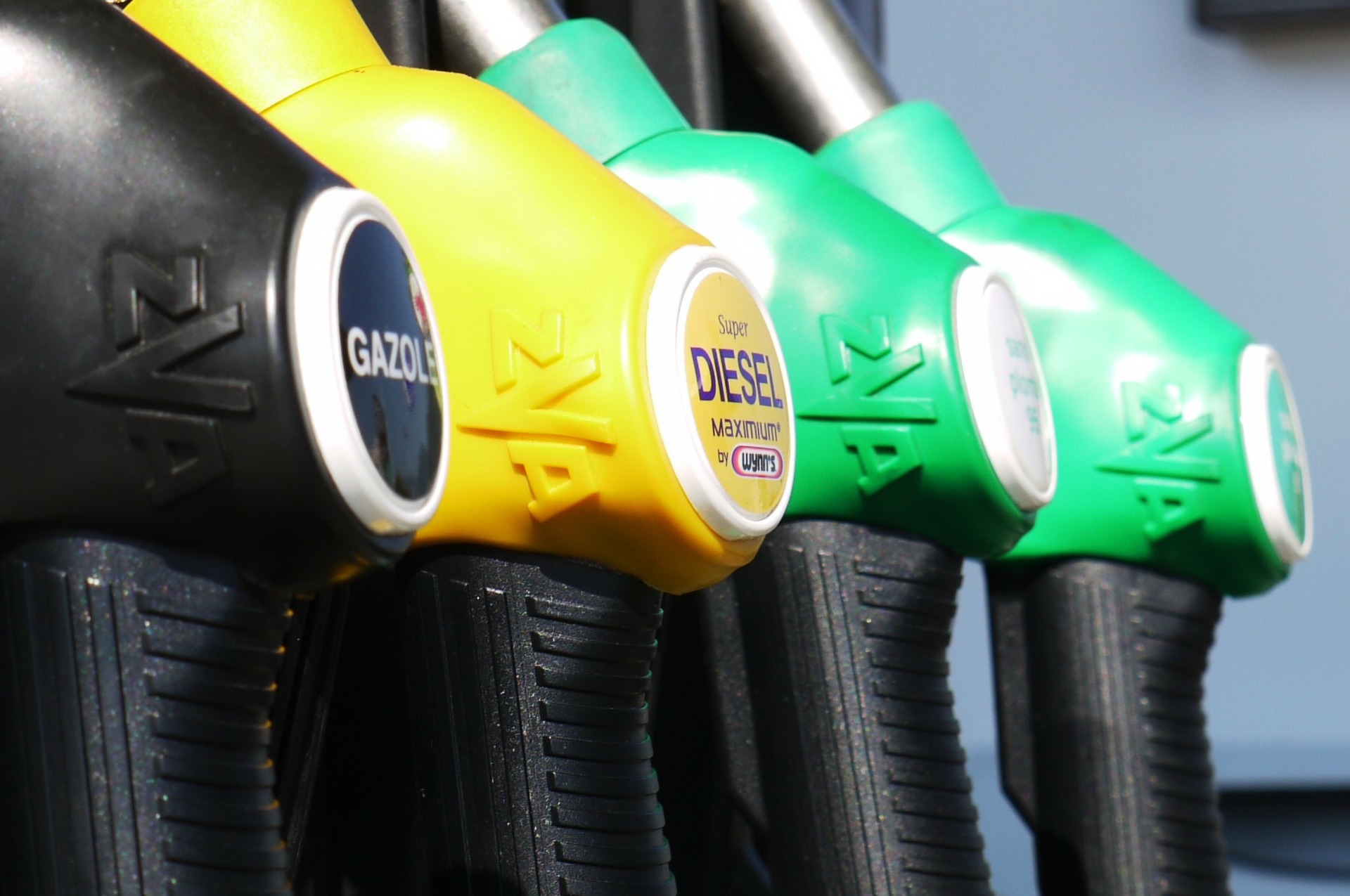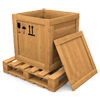product comparison
Quantity: {[ basketItem.quantity ]}
{[ formatPrice(basketItem.price * basketItem.quantity, basket.currency) ]} ({[ formatPrice(basketItem.price, basket.currency) ]})
Information about refuelling
Anyone driving a vehicle must refuel regularly. This has now become a matter of course, so that we hardly think about the process itself. Therefore we have dealt a little bit more detailed with the topic refuelling and petrol stations and get to the bottom of some of the myths. In addition, we will give you some important tips about refuelling and what you need to know at the petrol station.
Refuel then and now

Today, gas stations are taken for granted - a hundred years ago they were a rarity. Around 1900, petrol was still sold in drugstores or grocery stores in canisters. In the 1920s, individual petrol pumps were already standing in front of department stores, inns or workshops. By the end of the 1930s, there were already over 60,000 petrol stations in Germany, and their expansion continued after the war. Instead of small places with one petrol pump, from the end of the 1970s onwards there were increasingly larger filling stations with new petrol pumps and up to five different types of fuel. This was accompanied by the introduction of self-service, and the actual turnover shifted more and more to the shops. More and more money was earned with coffee and sweets.
The technology of fuel dispensers
The high performance dispensers for trucks were added in the 1970s, which can achieve up to 100 litres per minute. When the changeover to unleaded petrol took place in the 1990s, the filler necks for unleaded petrol were given a smaller diameter (21 mm) to avoid confusion.
The nozzle consists of an inner pipe, through which the fuel flows, and an outer pipe. The outer tube is responsible for the sucking back of the escaping vapours such as the benzene. On average, one litre of gas also escapes per litre of fuel. The vapour recovery system has been mandatory since 1992. Since 2003 the recirculation must also be monitored automatically. In addition, there is a small hole in the front of the nozzle through which air flows. As soon as fuel flows into this hole, the automatic shut-off system ensures that the tank does not overflow.
The amount of fuel is determined by piston knives, which are usually connected to an electrical pulse generator. Fuel dispensers are checked every two years by the Office of Weights and Measures. By the way: overfilling the tank is not recommended, especially in summer, because the fuel expands in heat! If the tank should overflow, you usually don't have to worry about the paint, but the fuel should be wiped away for the sake of the environment.
Security at the filling station
Fuels are inflammable and explosive and are also toxic. Every filling station must have a liquid-tight underground, so that no environmentally hazardous substances can get into the ground. In addition, the floor surface of a filling station must be sufficiently impermeable and conductive. The ground must therefore be conductive in order to prevent sparks from being generated by a discharge. The dispensers are earthed via the hoses and the dispenser itself is protected with a collision guard such as a high kerbstone.
An additional safety factor are the pipelines, which provide the necessary pressure compensation to the underground tanks. On the one hand, the ventilation ensures that no negative pressure is created which would prevent the tanks from being filled and, on the other hand, overpressure is avoided so that the tanks cannot explode.
What myths are there about refueling?
- Myth 1: Smoking is prohibited at petrol stations
That's correct. Sparks may be generated by flying ashes, which can cause a fire hazard. - Myth 2: Mobile phone use is prohibited
That is also correct. If a mobile phone falls or the battery comes loose, this can also cause a spark. - Myth 3: Fuel prices are cheapest on Monday
This is wrong. In the meantime the time of day and not the day itself is decisive for the price of fuel. - Myth 4: The price shown on the scoreboard is binding
This is wrong. Only the fuel price at the gas pump is binding. - Myth 5: Cars on fire explode
That is also wrong. The fuel mixture is not explosive and even if reserve canisters are damaged in an accident, they will not explode but only leak. - Myth 6: Running the tank empty harms my vehicle
That's right. After refueling an empty car, the engine often needs several attempts to start. The fuel system must first bleed itself. The fuel and injection pump suffer greatly from this, because the fuel also serves as a lubricant and coolant and is missing in this case. Modern cars are largely immune to running dry. The engine shuts down automatically in an emergency. Therefore, it is best to go directly to the nearest gas station if the board computer displays a fuel level message.
Which types of fuel are there and where are the differences?

In the following we explain the fuels briefly and concisely:
- Gasoline (Super): A mixture of 150 components. Super is indicated in different octane numbers, for example Super 95. E10 has a higher proportion of bioethanol, but not all petrol engines may fill up with E10.
- Diesel:This fuel consists of different hydrocarbons, minimum cetane number is 51, diesel is also offered in a premium version. With a higher cetane number, diesel vehicles can achieve a higher engine performance. No gloves are required when refuelling diesel, but it is recommended that they are worn, as pollutants can be absorbed through the skin on contact with the fuel. In addition, the hands do not smell unpleasantly of diesel when the nozzles are soiled with fuel.
- Natural gas is considered to be more environmentally friendly and receives tax benefits.
- Biodiesel: Is produced from vegetable oils and methanol. Harmful emissions can be reduced.Some diesel vehicles are approved for the use of biodiesel.
Of course there are other types of fuel such as hydrogen. You can find out which fuel you need for your vehicle either in the fuel filler cap, in the operating instructions or in the registration certificate under point P3, in the old vehicle registration document under point 5. If the vehicle is filled with the wrong fuel, the engine should never be started under any circumstances in order to avoid major engine damage. No matter whether petrol was filled up instead of diesel, or vice versa, the wrong fuel must be pumped out of the tank! Afterwards a thorough tank cleaning is necessary.

Premium fuels with a higher octane or cetane number can increase the performance of the engine, but the engine must also be designed for this. By the way, you can save money when you refuel in the evening. Current studies show that between 6 p.m. and 8 p.m. fuel prices are the lowest. Our recommendation: Download a fuel app to your smartphone and keep an eye on all fuel prices in the area! By the way, if you can't remember which side of the fuel cap is on, or if you regularly change cars, here's a little tip: On many vehicles, there is a small arrow next to the fuel pump symbol in the cockpit next to the fuel gauge. This arrow shows where the fuel cap is located on the car.
Are brand-name petrol stations better than independent petrol stations ?
For branded petrol and also for fuel from "cheap petrol stations", the quality requirements are regulated by law. Many branded petrol stations add their own additives to the fuel, but ADAC inspections have not been able to prove any difference in quality. Also a lower consumption was not determined. Some experts also advise that it is better to obtain and add additives yourself. But that is left to everyone. Further information on additives can be found here.
If you want to fill up with additional fuel, you will need cans. In the car only 10l extra may be carried and at home only 20l petrol or 200l diesel may be stored. Always keep in mind that every kilo in the car increases fuel consumption. Some of the myths are true, but not all. With our tips and advice, refuelling is now easier and perhaps even cheaper for you. We wish you always a good trip.

 Deutsch
Deutsch  English
English 





























